It would be easy to think that the art of grafting one plant onto the rootstock of another is relatively new but in fact evidence exists of it having been used in horticulture as far back as 300BC.
Although commonly used elsewhere in the world the art of grafting was slow to reach England. In 1592 a book was written by Leonard Mascall promoting the 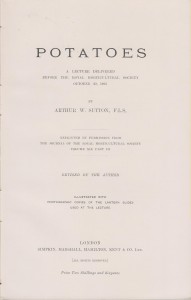 benefits and chiding England for being so far behind the rest of the world in terms of “grafyying”. Grafting, in its various forms, has since become an established and much practised form of propagation.
benefits and chiding England for being so far behind the rest of the world in terms of “grafyying”. Grafting, in its various forms, has since become an established and much practised form of propagation.
In 1895 Arthur W Sutton delivered a lecture on the subject Potatoes to the Royal Horticultural Society and included the results of some experiments he had conducted with the closely related potato and tomato.
Luckily the lecture was published in booklet form, a copy of which we keep in our extensive company archives.
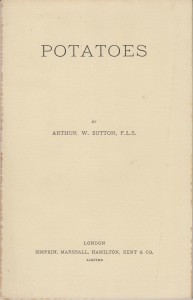
On 22nd March 1895 Arthur planted one seed potato tuber in each of a series of pots.
“When the growth attained a height of 4 to 5 inches the Potato stem was cut off half an inch above the level of the soil, and a Tomato graft was introduced on May 8.
As a result the Potato roots maintained in growth by the Tomato foliage have produced a crop of potatoes in the pot and the Tomato foliage above ground has produced a crop of Tomatoes.”
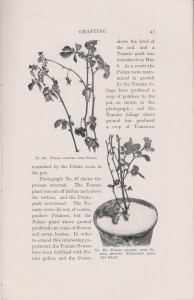
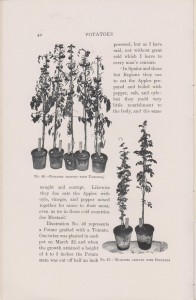
Although successful as an experiment this Potato/Tomato plant was never added to the Suttons range of products as there was one very obvious disadvantage – the potatoes could not be harvested without destroying the tomato plant!
Even then the potato yield was too small to make this anything more than an amusing novelty and certainly not of interest to the serious gardener wanting to grow food for the table.
Putting this novelty form of grafting aside it has been well-proven that grafted vegetables (when done sensibly) can be hugely productive, delivering up to 75% heavier crops than standard plants. The rootstock is carefully selected for powerful vigour and fruit producing qualities. The scion (upper plant) will be a super tasty high quality variety that produces an abundance of incredible fruit.
Suttons grafting is done by expert hand in our UK nursery. The rootstock imparts its vigour producing earlier and bigger yields without harming the flavour and quality of the fruit plus it naturally provides greater resistance to soil borne pests and diseases.
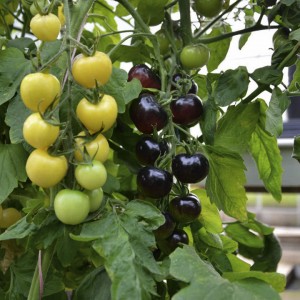 Suttons grafting has become really clever in that we’ve grafted 2 compatible varieties, chosen for their quality, onto one super-strong rootstock. One example of these wonderful “twin” plants is our new and exclusive Indigo Rose/White Cherry tomato. Last year we introduced Indigo Rose, the world’s first tasty black tomato. This year we’ve upped the ante by grafting this together with a creamy-white cherry variety to produce the first black and white tomato plant!
Suttons grafting has become really clever in that we’ve grafted 2 compatible varieties, chosen for their quality, onto one super-strong rootstock. One example of these wonderful “twin” plants is our new and exclusive Indigo Rose/White Cherry tomato. Last year we introduced Indigo Rose, the world’s first tasty black tomato. This year we’ve upped the ante by grafting this together with a creamy-white cherry variety to produce the first black and white tomato plant!
Another new and exclusive example of clever grafting is with the Suttons Traffic Light peppers. Again, 1 plant but 2 super-sweet varieties with 1 being red and the other orange while both starting out green.
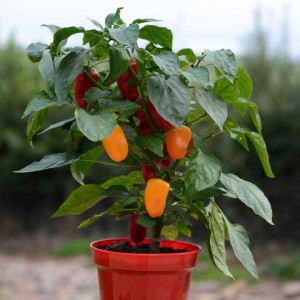
Suttons grafted plants are easy to grow in a greenhouse or sunny spot outside and can also be grown in large containers.
Visit the Suttons grafting process for more details
Last Updated on March 14, 2023 by Suttons Horticultural Team




